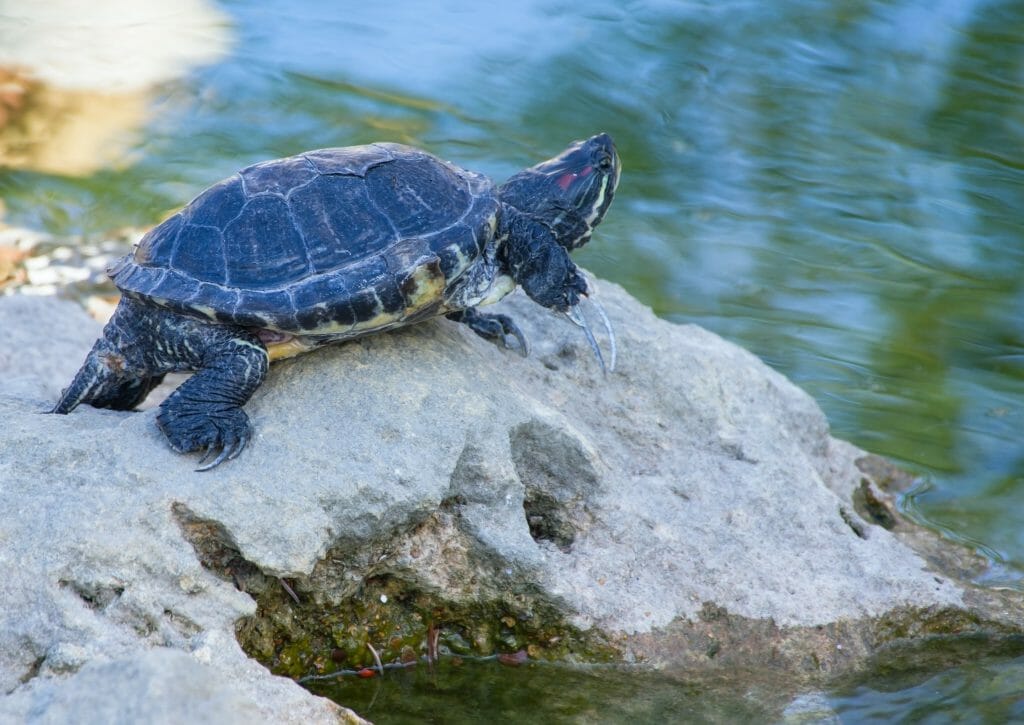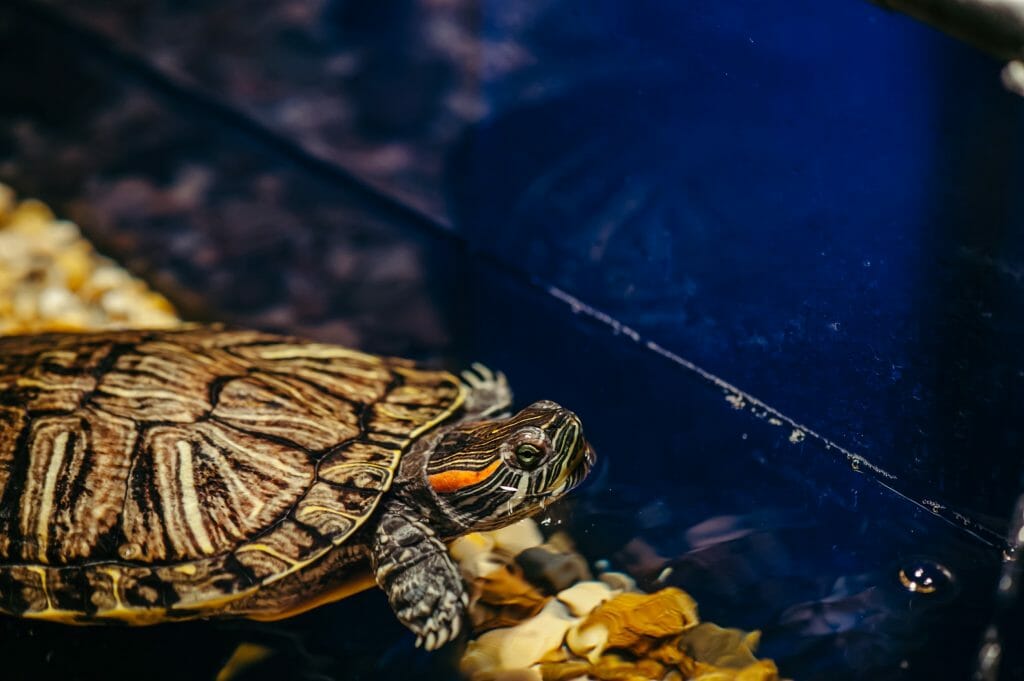Can Red-Eared Sliders Survive in Cold Water: Knowing the Right Water Temperature for Your Turtle
Red-eared slider turtles generally cannot withstand cold water temperatures, especially those that fall below the ideal parameter of 75 to 85 degrees Fahrenheit. They may experience problems such as getting cold and losing energy. If you decide to keep your turtle in cold water, make sure to provide it with enough warm water and food to stay healthy.

Also, hibernating your turtle may be a good option if the temperature is too low. However, make sure to check up on your turtle regularly to make sure it’s doing well.
Table of Contents
How Red-Eared Slider Turtles Do in the Cold
When the Water Is Cold
If the water in your red-eared slider turtle’s enclosure is too cold, it won’t be able to regulate its temperature well and could die. Ensure they are kept in the safe temperature range of 75 to 85 degrees Fahrenheit.
Immediately take them into warmer waters if your water temperature drops below this range! Ensure to provide them with a place to stay warm and dry, like an aquarium or terrarium (not in the tank with live fish). Regularly check the temperature of their enclosure to ensure that they are getting enough warmth.
Cold Weather
Wintertime means cold water! Remember that they are not the most resilient if you keep red-eared sliders. If you live in an area with severe winter weather, keep your red-eared slider hibernating until springtime.
Ensure their enclosure is heated and they have access to a water bowl. Keep them warm and hydrated if you decide to bring them into cold weather.
If you have a red-eared slider and it’s cold outside, the best action is to bring it inside to warm up. It would be best to release your turtle into fresh water when the temperature rises again. Ensure enough water is available so your turtle can drink; keep the tank dry. Remember to provide your turtle with a basking area where it can warm up and digest its food.
In addition to providing food and keeping your slider safe, keep an eye on their health and receive adequate warmth, nutrition, and shelter. They’ll need a tank or enclosure that is large enough to move around and protects them from drafts and low temperatures.
Hibernating as a Solution if It Gets Too Cold
When the cold weather hits, many people turn to hibernation as a solution. While this can be a great way to conserve energy, some risks associated with hibernation should be accounted for.
If your home is below freezing, consider hibernating your turtles. Keep an eye on them throughout the winter – if there seems to be any change in their health or behavior, see a veterinarian immediately!
There is a risk that your slider turtle could freeze to death, so make sure your turtle is well-fed and hydrated while hibernating to avoid any health issues when they wake up in warmer weather.

Temperature Requirements for Red-Eared Sliders
Keeping sliders healthy and fed in cold weather can be a challenge. To provide the perfect environment for them to thrive, give them plenty of gravel and snails to eat. This will help the sliders stay healthy and improve their digestion.
If your pond or lake isn’t heated, add some heaters to the shoreline to maintain the water temperature at the desired level. Ensure the water you provide is between 75 to 85 degrees Fahrenheit, as it is the ideal temperature for red-eared sliders.
Keep in mind that sliders may only survive in the water if the temperature is within the specified range. So, check the temperature of your pond or lake regularly to ensure the sliders are thriving!
How to Maintain the Right Water Temperature in Your Tank
Tank Placement
Keeping your tank water temperature at a stable level is essential for the health of your sliders. To do this, cover the tank with a lid during cold weather to help maintain water temperature. Use a thermometer to check water temperature every day and if it falls below the recommended range, add more warm water until it returns to normal.
Place your tank in an area where the temperature is stable. Avoid placing it near windows or other heat sources that might cause problems or modify the temperature in your setup. Only fill up your tank up to the top – overfilling can lead to problems and kill the slider.
Water Heater
Cold water can be fatal to red-eared sliders – make sure your tank is heated to the right temperature using a heater. Regularly checking the humidity levels in the tank and ensuring there are no leaks in your heating system will help keep them safe. Finally, it’s always a good idea to check that your water filter is effective and replace it as needed.
Broken Thermometer
It’s essential to be proactive regarding water temperature – by keeping an eye on the meter, you can ensure that your tank stays at a healthy temperature. Make sure to calibrate your thermometer every month for accurate readings. If you notice a problem with your thermometer, replace it with a new one.
If there are sudden changes in water temperature, adjust accordingly by adding or removing water from the tank. Indicate the date and time of this change so you can track its progress over time.